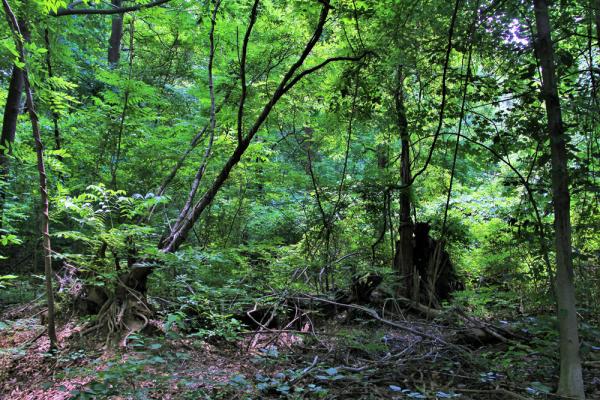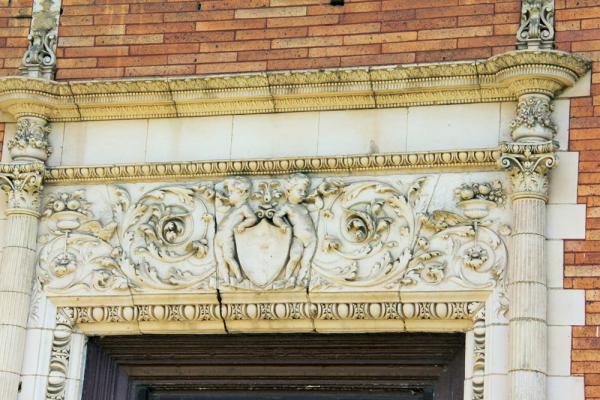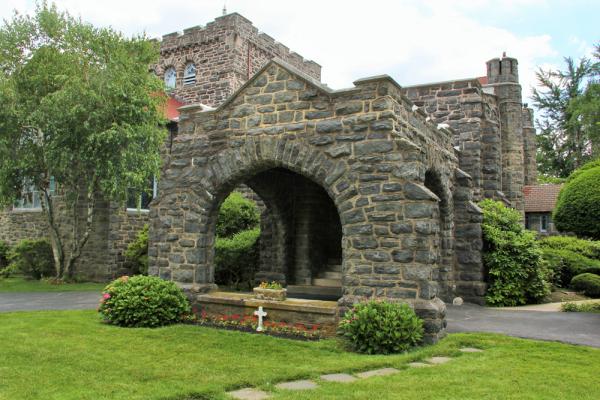Estates in Overbrook
Part of
Arriving in the mid-1680s, Welsh Quakers held the original patents in the Western Liberties. The descendants of these immigrants maintained sizable estates in the 18th and 19th centuries that evolved into the modern Overbrook.
Arriving in the mid-1680s, Welsh Quakers held the original patents from William Penn in the Western Liberties, which Penn had acquired from the Lenape Indians. The descendants of these immigrants maintained sizable estates in the 18th and 19th centuries that evolved into the modern Overbrook. These estates belonged to the Williams, George, Morris, Jones, and Pleasanton families.
Western Liberties
The Liberty Lands were created to make good on William Penn’s promise to award 10 acres of land in “the great towne” of Philadelphia for every 500 acres of country land purchased. As the City of Philadelphia was restricted to 1,280 acres, Penn compensated for his promise by creating the “Liberties,” “areas of free land” where purchasers of large tracts of Pennsylvania land could claim properties. The lands William Penn acquired from the Indians west of the Schuylkill River to Cobbs Creek were designated the Western Liberties. Arriving in the mid-1680s, Welsh Quakers were the first property holders, with large tracts located in what today is the Overbrook section of Philadelphia.[1] The Northern Liberties encompassed land between the city and Germantown and Frankford.[2]
Williams and George Estates
Edward Williams purchased the tract of land on which the future Overbrook Farms would stand from William Penn’s patent holder, the First Welsh Company, in 1693. On his estate, Williams cultivated corn, wheat, and other grains. The farm passed to two generations of Williams’s heirs and in 1786, by marriage, to the family of Amos George. The “Georges Farmlands” (several tracts of farmland owned by different family members) remained in the George family until 1893 (see map plate 26 and map plate 27) , when they were purchased by representatives of Drexel & Co., which orchestrated the development of Overbrook Farms.[3]
Morris Estate
In 1799, the broker, commission merchant, and widower Israel W. Morris inherited from his deceased wife “Greenhill Farms,” a sizable estate that dated to a 1681 grant from William Penn to the Welsh Quaker Thomas Lloyd in what is now Lower Marion Township. Over the next century the estate expanded as it passed through two other families before Israel Morris’s inheritance. Morris subsequently acquired land from the George family that extended the family’s holdings to include Indian Run (Indian Creek on some maps) and its immediate environs in Overbrook.[4] Wistar Morris, whose estate appears on an 1892 G.W. Bromley map, was the last of the Morris estate-holders in Overbrook.
Jones Estate
In 1701 David Jones, a member of the Third Company of Welsh and the first Jones to arrive in this country, acquired 286 acres of Overbrook land in a grant from William Penn. A large tract of this original grant, from 56th Street southwest along Woodbine Avenue to 64th Street, south to Jefferson Street and northeast back to 56th Street, was held by the family in the eighteenth and nineteenth centuries.[5] Rea and Miller’s 1849 map of Blockley Township shows Jones family holdings in Overbrook. By the late 19th century, the family had sold off its holdings above the Pennsylvania Railroad; Lewis Jones appears in a 1911 atlas published by J.L. Smith as a property holder adjacent to the Pennsylvania Institution for the Blind.
Pleasanton Estate
By the 1880s Captain Alfred Pleasanton owned an estate purchased by his father, the Civil War general Augustus J. Pleasanton, just to the east of the Jones Estate. In 1896, the family sold 26.3 acres of the estate to the Pennsylvania Institution for the Instruction of the Blind, which relocated its campus from 20th and Race streets to a new building at the Overbrook site in 1899.[6] After 1897 and Captain Pleasanton’s death, the remainder of the estate was sold. One of the new occupants, James J. Mitchell used the property to stable horses; the last occupants, the Stuarts, farmed it and sold vegetables to their Overbrook neighbors.[7]



